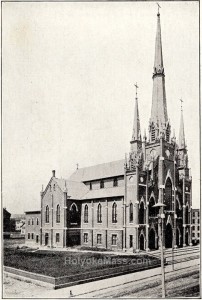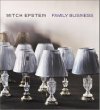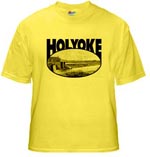by Laurel | December 13th, 2013
11 December 1904
- Church of the Precious Blood, Holyoke
[Note: this piece was published in 1904 and should be considered representative of the time. Initially a bit verbose, as the article continues there is some interesting information on the French Canadians in Holyoke and Springfield. Because of the length, the article has been split into six parts, this is Part IV of VI.]
Race, Integrity and Language Preserved to a Remarkable Degree–Causes of the Immigration Movement — Customs and Literature.
The French-Canadian Colony of Holyoke
The French population of Holyoke, which today is estimated at between 15,000 and 17,000 people, or over one-quarter of the city’s entire population, and which possesses real estate alone to the value of about $2,500,000, dates from about 1860. At the time the second dam across the Connecticut had been built at Holyoke, largely by the Irish, and the canal system established and mills built, there was found a shortage in mill operatives. The news of this situation was spread through the Connecticut Valley in this state and Vermont, and soon extended into the provinces of Canada on the north. A few pioneer French families soon came to Holyoke, and the head of one of them, Nicholas Proulx, was selected by the Lyman Mills company to return to Canada and arrange for the importation of a considerable number of his compatriots. In five years’ time Mr. Proulx alone brought to Holyoke some 500 people. These French-Canadians originally came with the sole idea of remaining long enough to save sufficient money to establish themselves in Canada, where they intended to return as soon as possible. But they found the new conditions of life so much to their liking that few did return to Canada, and that, on the other hand, a constantly increasing influx of immigrants was attracted and further augmented by the hard times which soon came upon Canada, as previously described.
The French Canadians had hardly been in Holyoke before they turned their attention toward providing themselves with a church, improving their house of worship as rapidly as their numbers and resources permitted. In 1869 a mission chapel was built on the site where Father Crevier’s house at the corner of Park and Cabot Streets, next to the church of the Precious Blood, now stands. two years later occurred the most terrible disaster in the history of the French-Canadians, or indeed in the history of Holyoke when this chapel was burned during the services of Corpus Christi, and 63 people lost their lives in the flames while 14 other subsequently died of their injuries. After the fire the French people worshiped in convenient halls until the completion of the present church of the Precious Blood in 1876. Rev Father Dufresne was its first pastor. He died in 1886 and was followed by Rev. Father Landry, who died in 1890. His successor was Rev. Charles Cervier, the present venerable pastor of the church.
During Father Landry’s pastorate the Precious Blood parish was divided, and the church of Our Lady of Perpetual help erected on Prospect street. Both of these churches no possess well-equipped parochial schools, there being about 1300 scholars enrolled in the Precious Blood school and 900 in the school of Our Lady of Perpetual Help. It is estimated by the school authorities that one-third of the children of school age in Holyoke are French-Canadian, and this fact illustrates, since the French Canadians actually represent only a little over a quarter of the total population that their families are larger than those of the other races,, and that they may therefore be expected to increase more rapidly. It is, however, noteworthy that the usual social law of the better the circumstances the smaller the families holds true in the case of the French-Canadians, for, since coming to the States and experiencing greater prosperity, their families, while still larger than those of the people about them are materially smaller than those formerly riased in Canada.
the French Monument building was erected as a monument to the genius and progress of the French speaking people of the city of Holyoke. The idea was advanced several years ago. About three years ago the matter took definite form in a plan to get all of the greater part of the French societies under one roof. Gilbert Potvin was elected its president. For about two years the matter was discussed, various plans being considered and studies over until about a year ago, when the present building was conceived,. It was erected by a stock company, who sold shares, though not enough to pay for the building, there being quite a large mortgage upon it. The building was occupied last spring, and in addition to the many societies sheltered under its roof there is a club, a cafe, and a large public hall run in connection with it. Joseph Laliberty had the contract for the woodwork, and J. J. Prew did the brickwork.
Notable among the characteristics of the French-Canadians is the degree to which they are gregarious. Although they come for the most part from the farms and villages near the St. Lawrence in the province of Quebec, they have almost uniformly sought the cities or their homes in New England. Only in comparatively rare cases have they entered upon farming in this country As already emphasized, they have one to the cities chiefly to work in the mills, but a recent movement in Holyoke is interesting as further illustrating the common impulse to live closely together. For the last year or so there has been a steady migration from ward 4 where the houses are comparatively small, to ward 1, on the other side of the canal, where numerous large apartment buildings have been erected particularly on the hill or “Fort” as it is called. These are now occupied almost exclusively by the French-Canadians, who seem to prefer them to the opportunity to live in single or double houses. In fact, the section of Holyoke below the canal is given over more and more to the French Canadians.
As a corollary to the migration of the French-Canadians from ward 4, it may be said, in passing, that the homes which they have left vacant are rapidly being filled up by the Poles, the most recent immigrants, who in the regular order of social evolution are occupying the lowest rung of the ladder and forcing the French-Canadians to a higher social scale.
On account again of this migration of the French Canadians from ward 4 to ward 1, a chapel called Notre Dame de l’Assumption has been built in ward 1 and now serves about 750 families, while there are left still tributary to the church of Our Lady of Perpetual Help 550 families. The parish of the Precious Blood Church on Cabot Street is estimated to contain 1700 families. The present pastor of the church of Our lady of Perpetual help is Joseph Marchand, who was preceded by Rev. C. E. Bruneault, who achieved much and is gratefully remembered.









